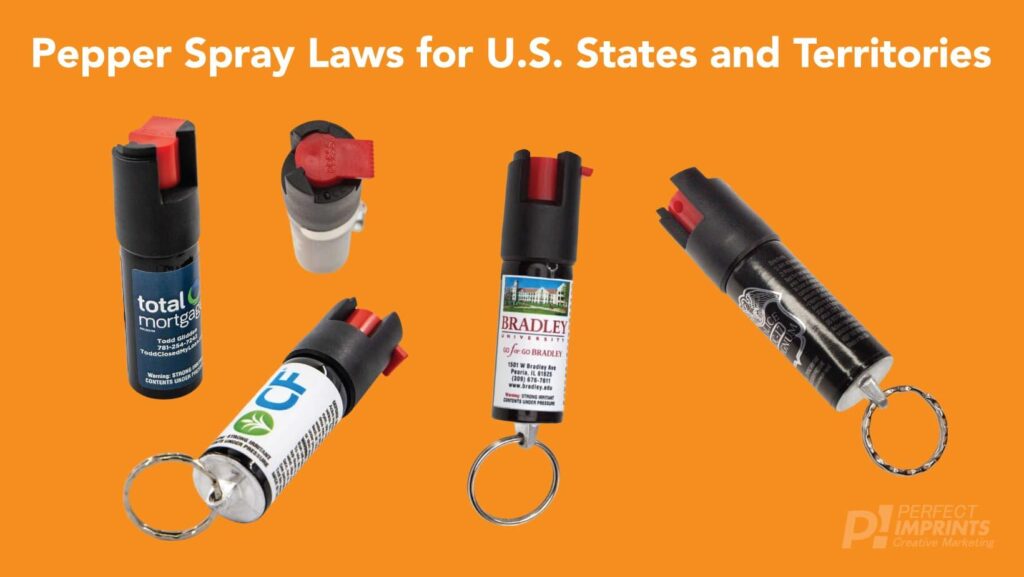Table of Contents
- Understanding Variations in Pepper Spray Regulations Across States
- Identifying Restrictions on Size, Strength, and Usage Permissions
- Key Steps to Verify Local Laws Before Purchasing or Carrying Pepper Spray
- Practical Tips for Safe and Legal Pepper Spray Usage in Public Areas
- Key Takeaways
Understanding Variations in Pepper Spray Regulations Across States
When carrying pepper spray, it’s essential to recognize that laws vary widely across the United States. Some states impose strict regulations on the size, concentration, and even the purchase of pepper spray, while others have more lenient or no restrictions at all. For instance, in certain states, pepper spray can only be carried by those above a certain age or may require a permit. Additionally, areas like airports, government buildings, and schools often have their own prohibitions regardless of state law.
Key factors to consider include:
- Permitted container size and maximum oleoresin capsicum (OC) concentration
- Legal age to purchase and carry pepper spray
- Restrictions on where pepper spray can be possessed or used
- Whether permits or licenses are needed for possession
Always verify local statutes before traveling or moving, as violating pepper spray laws can result in hefty fines or legal trouble. Staying informed not only ensures compliance but also guarantees you are prepared to safely protect yourself when necessary.
Identifying Restrictions on Size, Strength, and Usage Permissions
Before purchasing or carrying pepper spray, it’s crucial to understand that local regulations often impose specific limitations on size and strength. Many jurisdictions restrict the maximum container volume-commonly capping sprays at 2 ounces or less-to prevent misuse or over-reliance on excessive force. The concentration of active ingredients, such as oleoresin capsicum (OC), may also be regulated to ensure safety and responsible self-defense usage. Ignoring these rules can result in legal penalties, including fines or confiscation, so always verify the specifications authorized in your area.
In addition to size and potency, numerous areas enforce strict rules regarding who can carry pepper spray and under what circumstances. Some regions require permits, licenses, or age restrictions, while others may prohibit usage in certain places like schools, government buildings, or public transportation. To stay compliant, take the time to consult official government resources or legal experts about your local guidelines. Remember, understanding these parameters not only safeguards your rights but ensures that pepper spray remains a responsible and effective tool for personal protection.
- Maximum container size limits (e.g., under 2 oz)
- Strength and concentration restrictions on active ingredients
- Age and permit requirements for carrying pepper spray
- Prohibited locations and usage contexts
Key Steps to Verify Local Laws Before Purchasing or Carrying Pepper Spray
Before purchasing or carrying pepper spray, it’s crucial to do your homework to ensure full compliance with local regulations. Start by researching your state and city’s specific laws through official government websites or local law enforcement portals. Keep an eye out for restrictions such as age limits, types of pepper spray allowed, maximum concentration levels, and where you can legally carry or use it. Don’t forget to check whether there are any required permits or licenses needed to possess pepper spray in your area.
Additionally, consider reaching out directly to local police departments or legal advisors for clarification if you encounter ambiguous or conflicting information. Make a checklist of the critical points like:
- Age restrictions
- Allowed spray strength and quantity
- Carrying restrictions (public places, schools, airports, etc.)
- Permit or registration requirements
- Consequences of misuse or illegal possession
Being thorough in this process not only keeps you on the right side of the law but also ensures your personal safety tools are both effective and responsibly used.
Practical Tips for Safe and Legal Pepper Spray Usage in Public Areas
When carrying pepper spray in public spaces, it’s essential to familiarize yourself with its proper handling to ensure both safety and compliance with the law. Always store the spray within easy reach, such as in a purse or a belt holster, but never conceal it illegally. Before using it, identify the wind direction to prevent self-exposure and aim for the attacker’s face, specifically the eyes, for maximum effectiveness. Keep your hand steady and practice maintaining a firm grip to avoid accidental discharge. Additionally, avoid using pepper spray in crowded places to minimize the risk of affecting innocent bystanders.
Legal restrictions vary widely, from the allowed concentration of active ingredients to age limits and where pepper spray can be carried or used. To respect local regulations, consider these critical points:
- Check local laws about permissible sizes and formulations of pepper spray.
- Confirm if a permit is required to carry pepper spray in your area.
- Be aware of restricted zones such as government buildings, schools, or airports where carrying pepper spray is prohibited.
- Understand the legal consequences of misuse, including potential fines or criminal charges.
Key Takeaways
Staying informed about local pepper spray laws isn’t just a smart move-it’s essential for your safety and peace of mind. Regulations can vary widely depending on where you are, and what’s legal in one place might land you in trouble in another. Before you pack your pepper spray, take a moment to check the rules of your destination. A little research goes a long way in ensuring you’re protected-legally and physically. Remember, responsible self-defense starts with knowing the law. Safe travels and stay prepared!Check Our Other Blogs
- StunGun – Your Trusted Source for Stun Guns, Laws, and Self-Defense Tips
- PepperSprayLaws – Your Trusted Resource for Pepper Spray Information
- StunGunLaws – Your Trusted Guide to Stun Gun Legality and Safety




